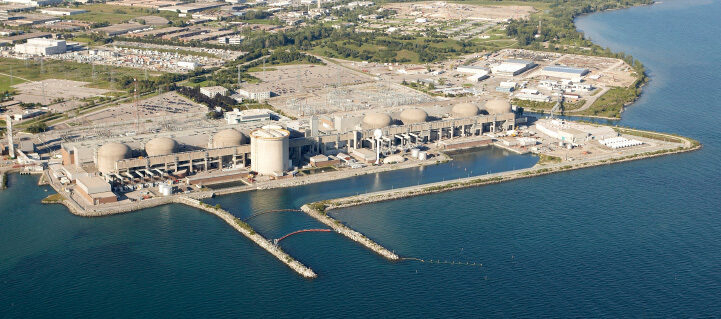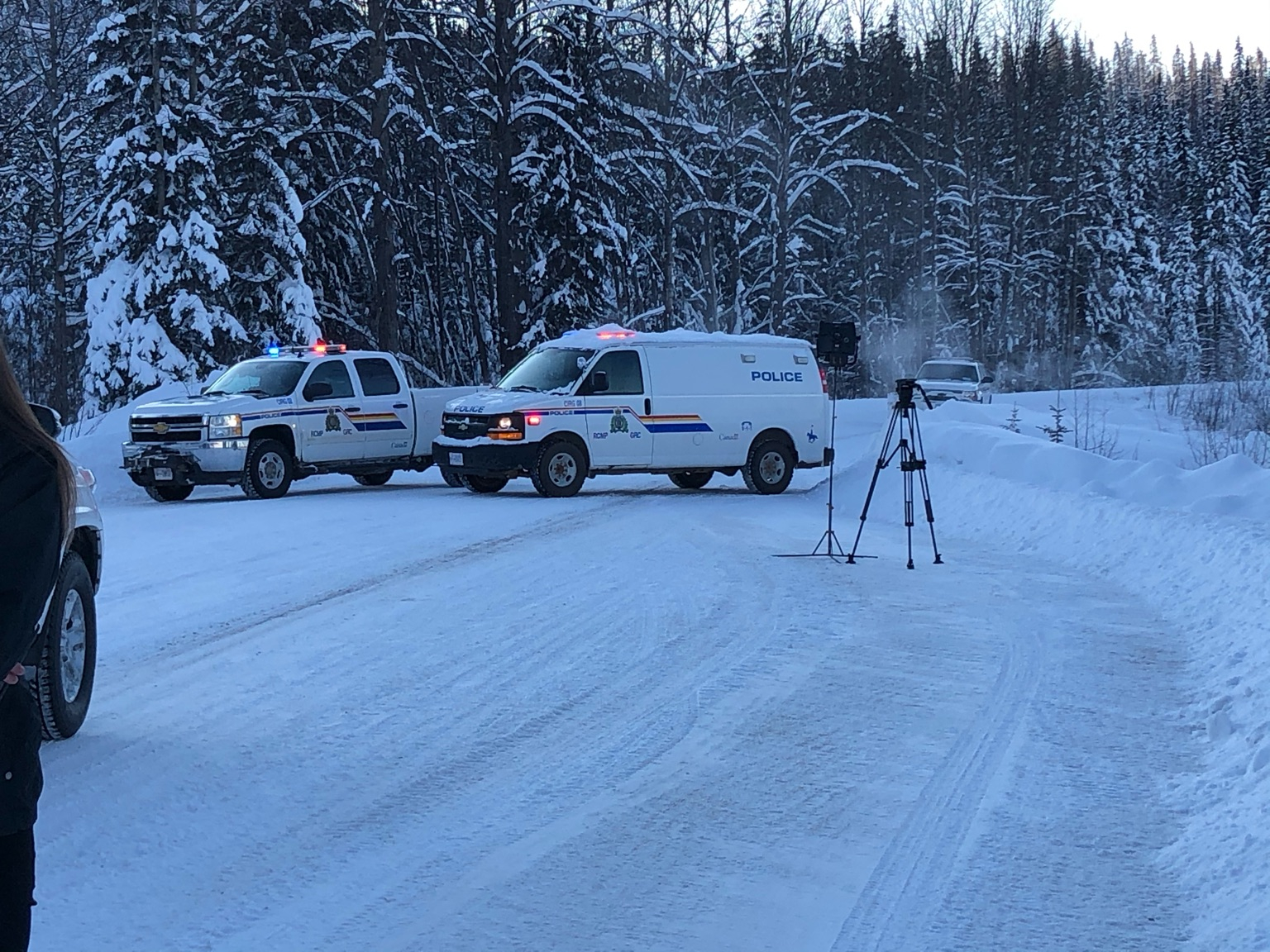
Energy minister Greg Rickford (centre) with Premier Doug Ford and Lieutenant General Elizabeth Dowdeswell at his swearing in at Queen’s Park, Toronto, on June 28th 2018. Photo by Alex Tétreault
The Pickering nuclear power plant is already operating beyond the terms of its natural life. Critics warn that the Ford government’s move to eke out a little bit more power from the site is playing with fire.
Energy Minister Greg Rickford said on Tuesday that Ontario Power Generation, the provincial agency that operates the site, had proposed keeping four of its six operational reactors going for one year past the already-extended deadline of 2024.
But critics warn that even one extra year of operations at the site is a risky undertaking.
“They are already skating on thin ice, and this is only going to make it even thinner ice,” said Gordon Edwards, a scientist and the founder of the Canadian Coalition for Nuclear Responsibility.
That’s because the zirconium alloy used in the hundreds of tubes holding nuclear fuel in Pickering’s reactors are exposed to intense radiation, very hot water, and high pressure, he said.
“As it gets older, the metal is getting progressively more brittle, meaning it is more inclined to break, more inclined to crack, more inclined to split, and that is very dangerous,” Edwards said.

It costs billions of dollars to replace the tubing, which is what is being done at the refurbishments at the two other nuclear plants in Ontario, in Darlington and on the Bruce Peninsula.
Ontario is spending some $25 billion between 2016 and 2031 to extend the life of 10 reactors at those sites and maintain the province’s nuclear power capacity at 9,900 megawatts . Ontario’s peak demand has meanwhile fallen from just below 20,000 megawatts in 2005 to under 18,000 megawatts in 2016.
Nuclear power from Pickering, Darlington and Bruce supplies about 60 percent of Ontario’s total electricity needs.
Anti-nuclear advocates at Ontario Clean Air Alliance said in response to the extension news that Pickering “relies on seriously outdated technology” and is designed in such a way that a problem with any one of its six operational reactors could create a cascading effect on the others.
Angela Bischoff, a director at the group, also said that the plant has been plagued with safety problems over the years, including an accident in 1983 in which a pressure tube suffered a metre-long rupture and a loss of coolant. Coolant loss can cause a surge of power to occur in the reactor core. The site was shut down and two of the four reactors were eventually replaced (and two mothballed) at a cost of $1 billion.
Then in 1994, another pipe break resulted in a major loss of coolant and a spill of 185 tonnes of heavy water. Emergency measures to cool the core averted a meltdown.

The news that the Ford government was looking to extend the Pickering plant’s operational life was first reported by the Toronto Star on Monday.
The proposal would need to receive approval from the industry’s federal regulator, the Canadian Nuclear Safety Commission (CNSC).
A spokesperson for the regulator said it has not yet received notice that OPG intends to amend the terms of its licence. If and when such a notice is received, it would be reviewed by staff who would then make recommendations to the commission.
The application would also be subject to a public hearing “focused on safe operations and the protection of health, safety and environment,” senior communications advisor Isabelle Roy wrote in an email.
“It is important to emphasize and reiterate that the Commission will not issue a licence amendment, or any licence, unless it is satisfied that it is safe to do so and that there are adequate measures for the protection of the environment, the health and safety of persons and the maintenance of national security and international obligations,” she added.
Pickering was initially expected to safely produce power for some 230,000 full power equivalent hours, which is equal to about 30 years of typical operation.
The CNSC upped that to 247,000 hours in 2014, and in 2018, when the CNSC approved the extension of Pickering’s life to 2024, it said its reactors could stretch that to a maximum of 295,000 hours.
It is not clear if the Ford government’s proposal will include exceeding that limit.
When Quebec closed its sole nuclear facility, Gentilly-2, in December 2012 it was approaching the 210,000 full power equivalent hours it was designed to withstand.
Thierry Vandal, Hydro-Quebec’s then-CEO, told the province’s National Assembly soon after that he was no more inclined to operate it past that limit than he would “climb onto an airplane that does not have its permits and that does not meet the standards.”
Green Party leader Mike Schreiner said he is “not ideologically opposed to nuclear” but warned that “you don’t want to tempt fate or roll the dice too many times before something goes wrong.”
“It is well past its best-before date,” he said. “It seems really irresponsible on the premier’s part.”
He also pointed out that the Ford government had promised to lower electricity costs, yet is choosing expensive nuclear refurbishments and extensions over cheaper alternatives. These include efforts to improve energy efficiency and conservation, for which Ford has cut funding. Ford’s government has also spent at least $231 million to cancel hundreds of wind and solar projects, including two that were nearing completion, and rejected a deal with Quebec to import some of its excess hydro-electric power.
“They’re chasing nuclear dreams when we have lower cost options available to us,” he said. SOURCE


/https://www.thestar.com/content/dam/thestar/opinion/star-columnists/2020/01/14/we-got-good-reasons-to-be-alarmed-about-nuclear-reactors/fukushima.jpg)
/https://www.thestar.com/content/dam/thestar/uploads/2020/01/14/alert-0.jpg)
/https://www.thestar.com/content/dam/thestar/uploads/2020/01/14/hi-j0092-0.jpg)
/https://www.thestar.com/content/dam/thestar/uploads/2020/01/14/chernobyl-083-0.jpg)



Our wee co-op has also made such a statement:
http://ecoreality.org/wiki/Statement_in_support_of_the_Wet%27suwet%27en
Do you belong to a church group, charity, civic organization, or serve in local government? Your group is invited to do so, as well!
http://unistoten.camp/support-us/solidarity-statements/
This whole thing is wrong on so many different levels. The Wet’suwet’en is reporting that the RCMP is blocking shipments of food to their camps, during a bitter cold snap! “Starve them out” That thinking is so 1876. It is immoral. SOURCE
RELATED:
Complaints filed against RCMP for blocking Wet’suwet’en access